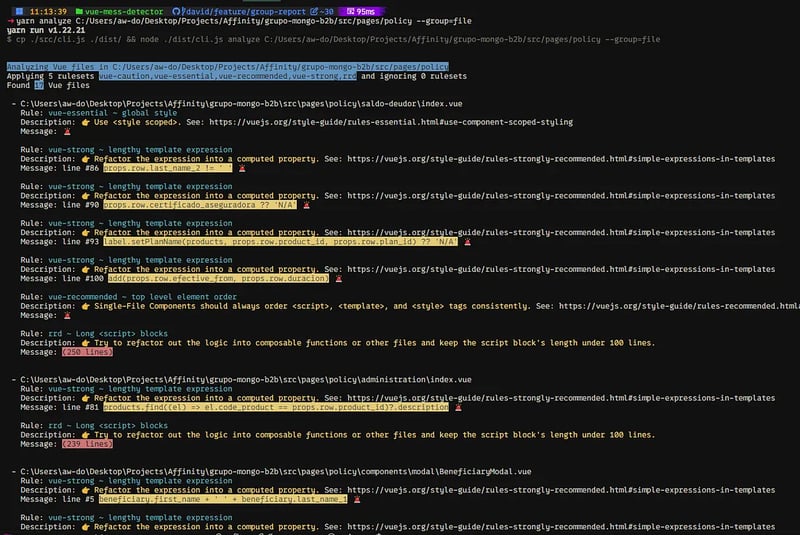
vue.js 是一种用于构建用户界面的流行 javascript 框架。随着 vue 3 的发布,与 vue 2 相比有了显着的改进和新功能。这篇文章将提供 vue 2 和 vue 3 之间的详细比较,突出显示关键差异和增强功能,并提供代码片段来说明这些更改。
1. 反应系统
视图2:
执行:
vue 2 的反应系统基于 object.defineproperty。该方法通过为每个属性定义 getter 和 setter 来拦截属性访问和修改。
// vue 2 reactivity using object.defineproperty
const data = { message: 'hello vue 2' };
object.defineproperty(data, 'message', {
get() {
// getter logic
},
set(newvalue) {
// setter logic
console.log('message changed to:', newvalue);
}
});
data.message = 'hello world'; // console: message changed to: hello world
限制:
- 属性添加/删除:vue 2 无法动态检测属性添加或删除。
- 数组突变:vue 2 需要特定的数组突变方法(push、pop、splice 等)来跟踪更改,这可能会受到限制且不太直观。
视图3:
执行:
vue 3 使用 es6 proxies 作为其反应系统,这使得框架能够以更全面、更少侵入的方式拦截和观察对象和数组的变化。
// vue 3 reactivity using proxy
const data = vue.reactive({ message: 'hello vue 3' });
vue.watcheffect(() => {
console.log('message changed to:', data.message);
});
data.message = 'hello world'; // console: message changed to: hello world
优点:
动态变化:vue 3 可以反应式检测属性添加和删除。
更好的性能:基于代理的系统提供更好的性能和更少的开销。
2. 组合api
视图2:
可用性:
composition api 可通过 vue composition api 插件使用。
// vue 2 component using options api
vue.component('my-component', {
data() {
return {
count: 0
};
},
methods: {
increment() {
this.count++;
}
},
template: `<button>{{ count }}</button>`
});
用法:
开发者主要使用options api,它将组件代码组织成数据、方法、计算等部分
视图3:
内置:
composition api 原生内置于 vue 3 中,提供了 options api 的替代方案。
// vue 3 component using composition api
import { definecomponent, ref } from 'vue';
export default definecomponent({
setup() {
const count = ref(0);
const increment = () => count.value++;
return { count, increment };
},
template: `<button>{{ count }}</button>`
});
优点:
- 逻辑重用:促进更好的逻辑重用和组合。
- 代码组织:允许将相关逻辑分组在一起,使代码更加模块化和可维护。
3. 性能
视图2:
渲染:
使用传统的虚拟 dom 和比较算法。
优化:优化范围有限,尤其是在大型应用程序中。
视图3:
渲染:
改进的虚拟 dom 和优化的 diff 算法。
立即学习“前端免费学习笔记(深入)”;
树摇动:
增强了树摇动功能,通过消除未使用的代码来缩小包大小。
内存管理:
更高效的数据结构和优化带来更好的内存使用。
4. typescript 支持
视图2:
基本支持:
vue 2 有一些 typescript 支持,但它需要额外的配置并且可能不太无缝。
工具:
typescript 工具和支持尚未集成。
// vue 2 with typescript
import vue from 'vue';
import component from 'vue-class-component';
@component
export default class mycomponent extends vue {
message: string = 'hello';
greet() {
console.log(this.message);
}
}
视图3:
一流的支持:
vue 3 提供一流的 typescript 支持以及更好的类型推断和工具。
一体化:
以 typescript 为设计理念,使其更易于使用并提供更好的开发体验。
// vue 3 with typescript
import { definecomponent, ref } from 'vue';
export default definecomponent({
setup() {
const message = ref<string>('hello');
const greet = () => {
console.log(message.value);
};
return { message, greet };
}
});
</string>
5. 新功能和增强功能
vue 3 引入了 vue 2 中没有的几个新功能:
- teleport:允许在 dom 树中与其父组件不同的部分渲染组件。对于模式、工具提示和类似的 ui 元素很有用。
<!-- vue 3 teleport feature -->
<template><div>
<h1>main content</h1>
<teleport to="#modals"><div class="modal">
<p>this is a modal</p>
</div>
</teleport>
</div>
</template><script>
export default {
name: 'app'
};
</script><!-- in your html --><div id="app"></div>
<div id="modals"></div>
- fragments:支持组件模板中的多个根节点,无需单个根元素。
<!-- vue 2 requires a single root element -->
<template><div>
<h1>title</h1>
<p>content</p>
</div>
</template>
<!-- vue 3 supports fragments with multiple root elements --> <template><h1>title</h1> <p>content</p> </template>
- suspense:一种处理组件中异步依赖关系的机制,提供了一种在等待异步操作完成时显示后备内容的方法。
<!-- Vue 3 Suspense feature -->
<template><suspense><template><asynccomponent></asynccomponent></template><template><div>Loading...</div>
</template></suspense></template><script>
import { defineComponent, h } from 'vue';
const AsyncComponent = defineComponent({
async setup() {
const data = await fetchData();
return () => h('div', data);
}
});
export default {
components: {
AsyncComponent
}
};
</script>
- 多个根元素:组件的模板中可以有多个根元素,为模板设计提供更大的灵活性。
6. 生态系统
视图2:
成熟的生态系统:
vue 2 拥有完善的生态系统,拥有广泛的稳定库、插件和工具。
社区支持:
可以获得广泛的社区支持和资源。
视图3:
不断增长的生态系统:
vue 3 生态系统正在快速发展,许多库和工具正在更新或新创建以利用 vue 3 的功能。
兼容性:
一些 vue 2 库可能尚未完全兼容,但社区正在积极致力于更新和新版本。
7. 迁移
vue 2 到 vue 3 迁移:
- 迁移指南:vue 团队提供了详细的迁移指南,以帮助开发人员从 vue 2 过渡到 vue 3。本指南概述了必要的步骤和重大更改。
- 兼容性构建:vue 3 提供了一个兼容性构建,可为大多数 vue 2 api 提供向后兼容性,从而实现逐步迁移过程。
概括:
- 反应性系统:vue 3 基于代理的反应性系统比 vue 2 的 object.defineproperty 系统更加高效和灵活。
- composition api:vue 3 内置且更强大,增强代码组织和逻辑复用。
- 性能:vue 3 中的显着改进,具有更好的渲染、树抖动和内存管理。
- typescript 支持:vue 3 提供一流的 typescript 支持,使其更易于集成和使用。
- 新功能:vue 3 引入了 teleport、fragments、suspense,并支持多个根元素,提供了更多的灵活性和强大的功能。
- 生态系统:虽然 vue 2 拥有成熟的生态系统,但 vue 3 的生态系统在社区的积极支持下正在快速发展。
- 迁移:vue 3 提供了工具和指南,方便从 vue 2 迁移,确保更平滑的过渡。
与 vue 2 相比,vue 3 带来了多项改进和新功能,包括更高效的反应系统、内置的 composition api、增强的性能、一流的 typescript 支持以及 teleport、fragments 和 suspense 等新功能。这些更改为构建现代 web 应用程序提供了更大的灵活性、更好的性能和更强大的框架。
如果您正在开始一个新项目,由于其先进的功能和未来的支持,vue 3 是推荐的选择。对于现有项目,vue 2 仍然拥有成熟的生态系统和强大的支持,并且有明确的迁移到 vue 3 的路径。
您想了解有关 vue 2 或 vue 3 任何特定功能的更多示例或解释吗?请在评论中告诉我!
以上就是Vue 和 Vue 之间的区别视图3的详细内容,更多请关注php中文网其它相关文章!






